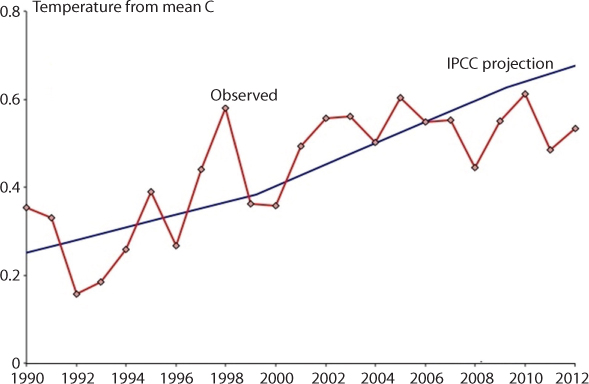Chapter 10The Science of Global Warming
10.1 Introduction
Global hydrological cycle is integral to the climate system. Even though it has become customary to present climate change as a distinct crisis, the overall climate change pattern depends on the entire ecosystem. In focus is the global temperature that shows a consistent upward slope in the modern era, synchronized with modern data collection techniques. Ever since the creation of The Intergovernmental Panel on Climate Change (IPCC) in 1988, numerous projects have been dedicated to collecting data as well as projection with various models (e.g., Figure 10.1). As discussed in previous chapters, these predictive models are rudimentary and do not have scientific basis.

Figure 10.1 IPCC FAR BAU global surfacetemperature projection adjusted to reflectobserved GHG radiative forcings 1990-2011 vs. observed surfacetemperature changes (average of NASA GISS, NOAA NCDC, and HadCRUT4) for 1990 through 2012 (Houghton et al., 2001).
However, the lack of scientific foundation did not stop scientists from making claims. Scores of publications have claimed to know the exact temperature from centuries (even millennia) of the history or to make predictions for centuries to come. They have often added contributions of human activities – meaning activities related to fossil fuel production and utilization Figure 10.2. For these as well, ...
Get The Science of Climate Change now with the O’Reilly learning platform.
O’Reilly members experience books, live events, courses curated by job role, and more from O’Reilly and nearly 200 top publishers.

